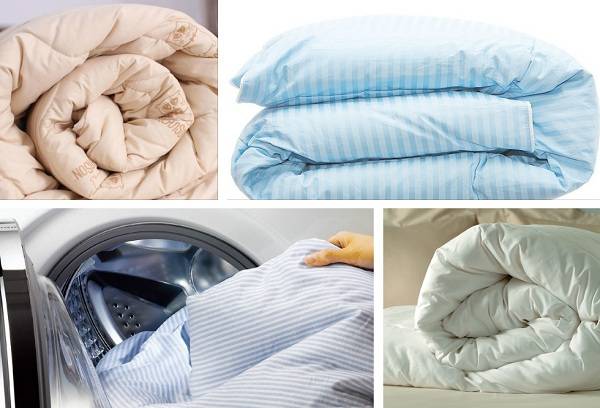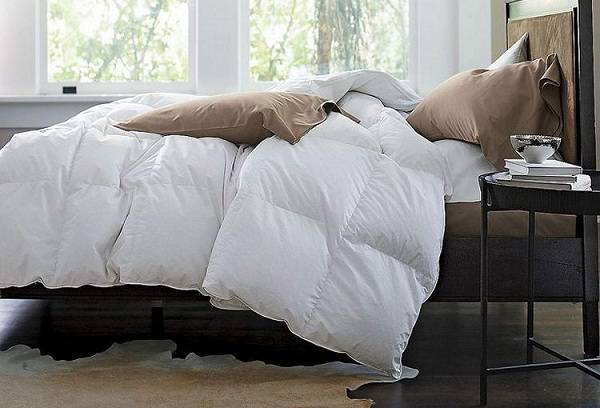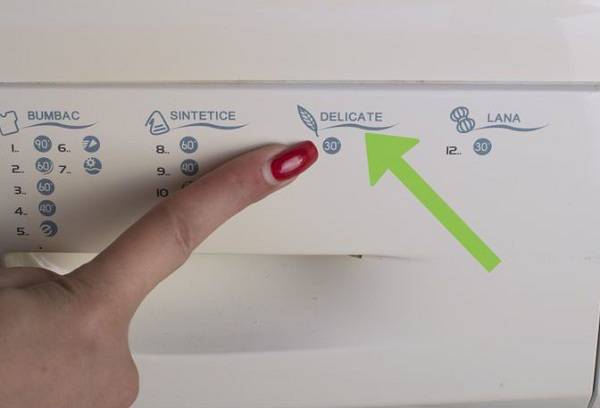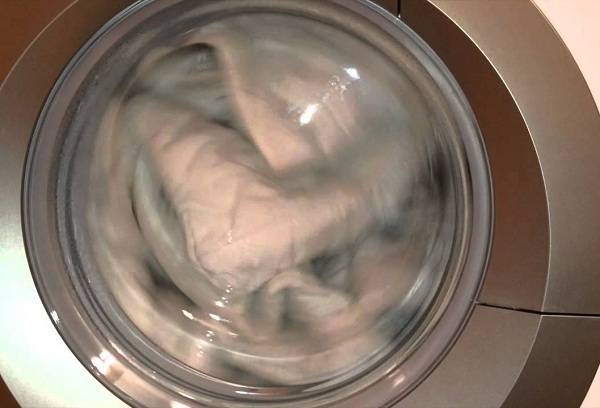Washing a duvet in a washing machine - is it possible or not?
Many housewives answer the question in the affirmative whether a duvet can be washed in a washing machine. This approach allows you to significantly save effort and time, avoid spending money on dry cleaning services, and get a clean and updated household item in a short time.
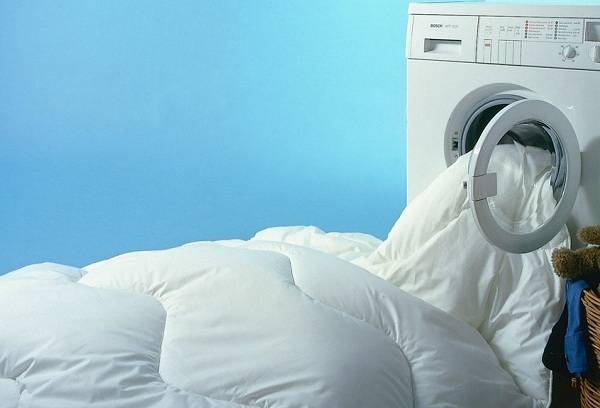
Practice shows that it is with the help of an automatic machine that you can get the optimal result, because This type of processing not only allows you to get rid of traces of dirt and dust, but also to break up fluff that has bunched up. The main thing is to correctly use the functions present in modern household appliances.
Conditions under which a duvet can be machine washed
There are several factors that complicate the process of using a washing machine to clean a duvet filled with down. The procedure can be carried out without danger if the following conditions are met:
- There are no prohibiting instructions on the label. If there is some kind of prohibition on the tag, then you should not neglect it. If you are in doubt about the meaning of individual symbols, it is better to spend time and find a decoding than to later try to restore a damaged product.
- The size of the blanket corresponds to the capabilities of the machine. The blanket should not only fit into the drum, but also leave enough space for water. If the lid is difficult to close, then you should not count on thorough cleaning and further leaching of detergents.
Tip: Do not dry clean a duvet (or even the filling removed from the cover) at home. In order to completely wash the reagents from the material, it is necessary to use special equipment. Dry cleaning is best left to professionals, otherwise there is a high risk of chemicals accumulating in the down.
- The weight of the bedding does not exceed the norm. Some blankets are not impressive in size, but contain a large amount of fluff. After it gets into the water and gets wet, its weight increases several times and takes up the entire space of the drum. It is most dangerous to process such products in a machine, because... The cover may not hold up and tear. Then all filters and hoses will be clogged.
- The fabric of the cover is not prone to shedding. Colorful blankets must again be washed with extreme care, otherwise they will lose their original attractive appearance after just 1-2 washes.
If all the above conditions are met, you can proceed with the procedure without fear.
Washing rules
There are several recommendations that, if followed, will allow you to achieve maximum results with minimal risks from the very first approach:
- Before using the machine, it is recommended to soak the blanket for a short time in a bathtub or a very large basin. This will allow you to evaluate the dimensions of the product when wet and wet it evenly. And if you add a couple of tablespoons of vinegar to the water, the dirt will come off the product even more actively.
- After pre-treatment, lightly wring out the blanket and place it in the drum of the machine. Instead of powder, we load a liquid enzyme agent and set the most gentle treatment mode. Turn off the spin and dry mode.We set the temperature within 30ºС.
After the cycle is completed, we begin to remove excess water from the product. It will take a long time to work, but this approach is the most optimal. After we manage to get rid of the liquid as much as possible, lay the blanket on a hard and clean horizontal surface and begin drying. We do not use artificial heat sources; the ends of the blanket should not hang down. Turn the product over regularly, shaking it to break up lumps of fluff. It is noteworthy that the higher the quality of the down, the faster it will dry.
Tips for organizing the process
The main potential problem when washing duvets is the transformation of soft down into one dense lump. There are rules that, if followed, will reduce this risk:
- In vertical machines, the filler most often clumps together, so owners of such mechanisms are better off using the manual method or going to a dry cleaner.
- If you exceed the thermal regime, the fluff will not only bunch up more, but will also turn yellow, giving unattractive stains on the surface of the cover.
- You can wash several tennis balls along with the blanket; they will knead the product, preventing the formation of lumps.
- Regularly fluffing your blanket as you use it each day will help keep the fluff from sticking together, which will help it recover faster after washing.
Even if the manipulation, carried out according to all the rules, did not give the expected result, there is no need to be upset. Down filling that has become lumpy can still be restored. It only needs to be shaken regularly and, if necessary, manual processing.
